By the fourth lap of Sunday’s race, I’d mostly gotten used to the 95-mile-per-hour dance with my kart through the sweeping first two turns at Nelson Ledges Road Course. Mostly.
Lap after lap, the conversation in my head went something like this:
This entry speed feels too fast.
Can I do this?
I can do this.
Turn in toward the apex at full throttle.
Quick-correct as the kart’s tail steps out over the undulating tarmac.
Get the wheel straight to carry more speed at corner exit.
Don’t hit the curbing at the edge of the track.
Nothing to it but to do it.
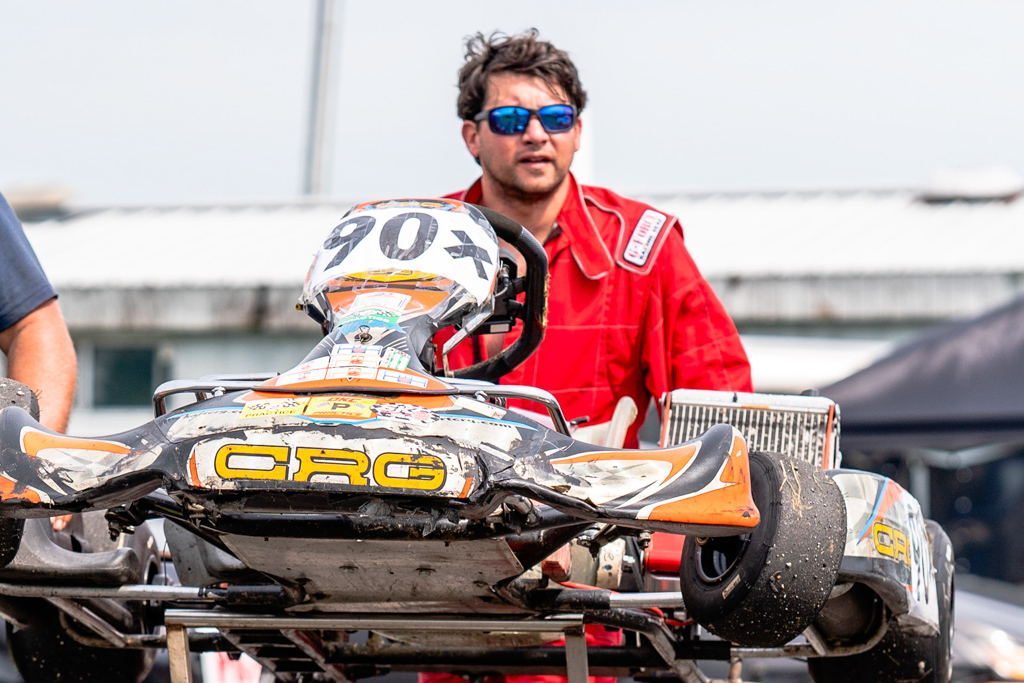
After years of merely keeping my hand in auto racing rather than dedicating myself to it, I recognized that my at-the-limit capabilities weren’t as finely tuned as they once were. In the past, I would have hired a coach, or shared my car with a faster driver and overlaid the data to see where I fell short. Both approaches have worked well for me in my SCCA Miata.
Lap times were only part of what I was after, though. I wanted to improve my control and precision at full tilt, so I chose another path: I bought a go-kart.
At 42, I’m much older than most novice karters. No matter. I justified my new purchase with a bit of logic: if I could sharpen my skills in a kart, I’d be better prepared when I hopped back into my race car.
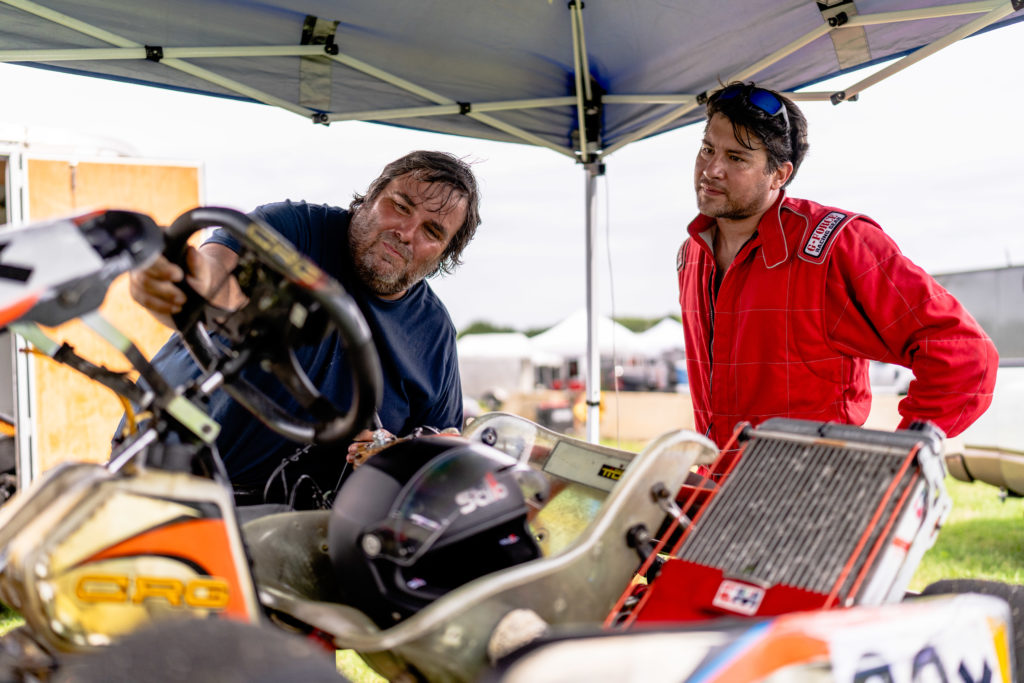
Bank (left) and your humble author (right) look through the kart’s MyChron data.
I was in foreign territory, though, so I sought counsel from my friend, Robin Bank. He’s a long-time karter and the face of 90racing.com, a family-run parts site. Given my racing history, he suggested a TaG (Touch-and-Go) kart, which derives its name from the kart’s onboard starter.
We identified a used CRG chassis with a 36-horsepower 125-cc Vortex ROK GP engine. Capable of triple-digit speeds with the right gearing (or in a draft), it’s not a starter kart by any means, but it’s also not as intimidating as the twin-engine laydowns or superkarts that populate the faster classes.
By reaching out to Bank, I knew I would glean more than advice on which kart to buy. In the eight years I’ve known him, he has yet to mince words or offer anything but clear-eyed assessment at the track.
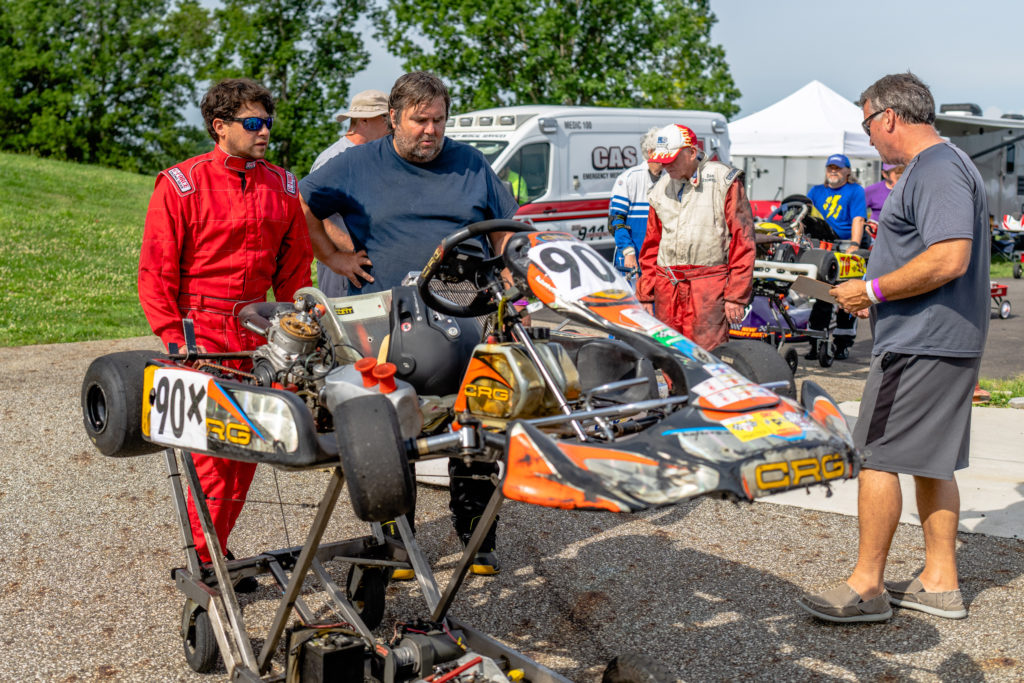
Bank spent his youth at sprint kart tracks, learning under karting great Kyle Adkins. He then graduated to ARDC Midgets (narrowly missing out on Rookie of the Year in 1994) and USAC Silver Crown, where he competed against the likes of Tony Stewart and Ryan Newman. He’s a road racer, too, fielding one of the most successful ChampCar endurance teams in the last decade. Last year, he scored a top ten in a packed H-Production field at the SCCA Runoffs, piloting a car that cost less than what many entrants had in their engines. I was in good hands.
Going fast through Nelson’s first couple of turns is a physics problem, and physics doesn’t care how you feel about grip limits in a given corner. After I came in from an off-pace practice session earlier in the weekend, Bank was as direct as the science itself. “Suspend your disbelief, trust that the kart can do it, and carry that much more speed through the corner,” he implored.
Trust that the kart can do it.
I turned this into a mantra over the course of the event, and it helped me build speed over subsequent sessions. Turns one, two, and three were the first corners I was able to weave together in a seamless series.
Set up for the turn three righthander.
Rotate the wheel toward the apex.
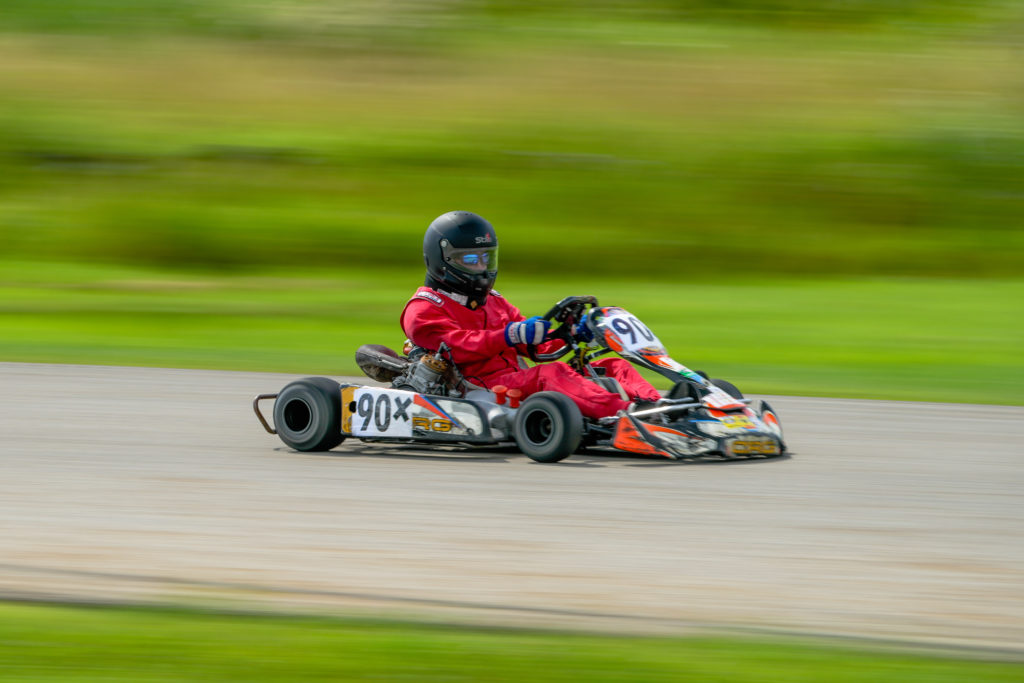
My right tricep brushed the plug wire atop the engine, jolting me with a zap of electricity meant for the fuel in the combustion chamber. Turns out there was a tiny crack in the wire, allowing the volts to arc into me, the unwitting path of least resistance. An instinctive wince juked my hands on the steering wheel, inducing a tank-slapper.
Try, dear reader, to avoid getting electrocuted while pulling a full G of lateral force through a corner—it’s quite distracting.
A kart’s suspension is almost non-existent—the frame’s flex and the steering knuckle’s built-in camber angles are the only suspension components. There are no bushings or inches of suspension travel to dampen inputs, so every tiny move you make—including involuntary jolts from spark plug wires—can transmit a quick, significant attitude change.
A few weeks earlier, at a Mid Ohio kart race, Robin pointed out that a kart’s quick-responding nature required quick reactions from its driver. “Your reaction skills are clearly at car speed,” he said. “We need to get you to kart speed.”
That simplified statement was the first step toward my progress in a kart. Readiness to make instant, precise adjustments would enable me to fully attack the corners and get the most of from the kart. “A kart is like a full-on race car: it works best when you are really aggressive,” Bank said. “Regularly pushing the kart’s limits will teach you aggression better than almost anything else, so when you hop in a car, you’ll be that much more capable.” I did my best to listen.

Back to that tank-slapper.
Whipsaw right-left-right, straight, whew. Saved it.
Keep that elbow tucked away from the engine. Damn, that hurts.
Did I really just save that?
Exit the corner and line up just right of center along that line of sealant for Oak Tree, a sweeping left.
Breathe off the throttle, last-second brake brush.
Ugh, you don’t need to brake, Eddy, trust that the kart can do it.
Assertive roll back onto the gas, counter-steer to your added throttle, turn in to take advantage of the banked inside lane.
Nelson Ledges has numbers for some corners and names for others. Oak Tree is an almost 180-degree left. You stick like glue down low but camber—and the grip that comes with it—fades as you get further up the track. The racers ahead of me would breathe throttle at entry and get right back in it. I couldn’t quite get that down. My brake brush only cost about half of a second, but it was more than enough to negate the pace I made on my competition through the first few corners.
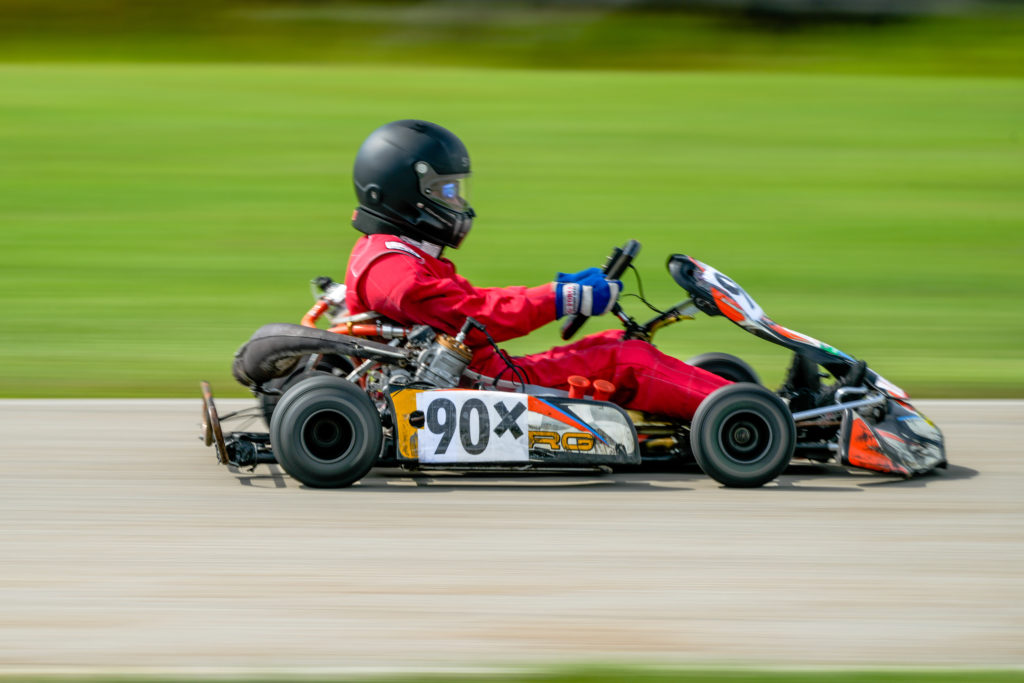
No time to dwell, the carousel was fast approaching. Earlier in the weekend I watched others in similar karts scoot away from me through the long, decreasing-radius, right-hander. After I got back to the paddock, I asked Robin how much he breathed through the carousel. “You don’t. That’s flat,” was the response. Noted.
I mustered up the courage in the next session. There’s a lot more grip in those tiny contact patches than you can imagine.
Find the camber in the center of the track, work toward the curb on the right.
That cornering force! My head must weigh 30 lbs.
Eyes up, eyes up, look for the exit.
Unwind that wheel, don’t pinch the corner exit too much—you’ll scrub speed.
Mind that traffic ahead. Feel the pull of the draft.
Slip past them on the inside of the back straight and line up for the kink.
You notice the draft in a race car, but the open-air pull in a kart is something else. It’s just one more racing principle that karting turns up to eleven.
The straight-line passes were easy enough, but admittedly, my racecraft leaned extra-cautious while attempting overtakes. That cost me. The leaders deftly got through traffic and began to put distance on me.
Through the kink in the back straight and into the brake zone,
Firm squeeze on the binders—ugh, just a bit too long again!
Hug the left side of the track, line up to diamond off tight-right turn 13.
Breathe off throttle, get the nose turned and roll back on the gas.
Lean left to take weight off that inside wheel.
It might seem counterintuitive to lean away from, rather than into, a corner. It all comes down to grip. Karts have a solid axle and no differential, so both drive wheels spin at the same rate. In corners, especially slow ones, the inside tire’s grip attempts to rotate the axle more slowly than the outside, causing the kart to bog. The solution? Lean away from the apex and take weight off the inside.
Check the rpm at corner exit. 7800—not bad. Onto the front straight to do it all again.
Trust. The. Kart.
A quick look at my data after the race showed a top speed of 98.9 mph (without any drafting help) and an average lap speed of over 94 mph. That’s a narrow delta and numerical proof that everything happens quickly at Nelson. My consistent 1:16.5-laps were good enough to earn fourth place in the final race of the weekend. Still, I was a second-and-a-half off the leader’s pace. I knew exactly where I’d left that time on track, though. Perfecting Oak Tree and the brake zone at the end of the back straight—along with my overall racecraft—are on my hit list next year. Lap times aside, I made progress on what I set out to do. I managed to get my kart to its limits and keep it under control when I exceeded them.
A couple months later, I completed an SCCA Club Racing weekend in my Miata and discovered just how right Robin was about reaction speed. Corrections in the car were comically less intense than in the kart, and I felt incredibly in tune with my car’s dynamics. I might be a little late to the karting party, but it’s exactly what I need to sharpen my skills as a driver. I’m hooked.
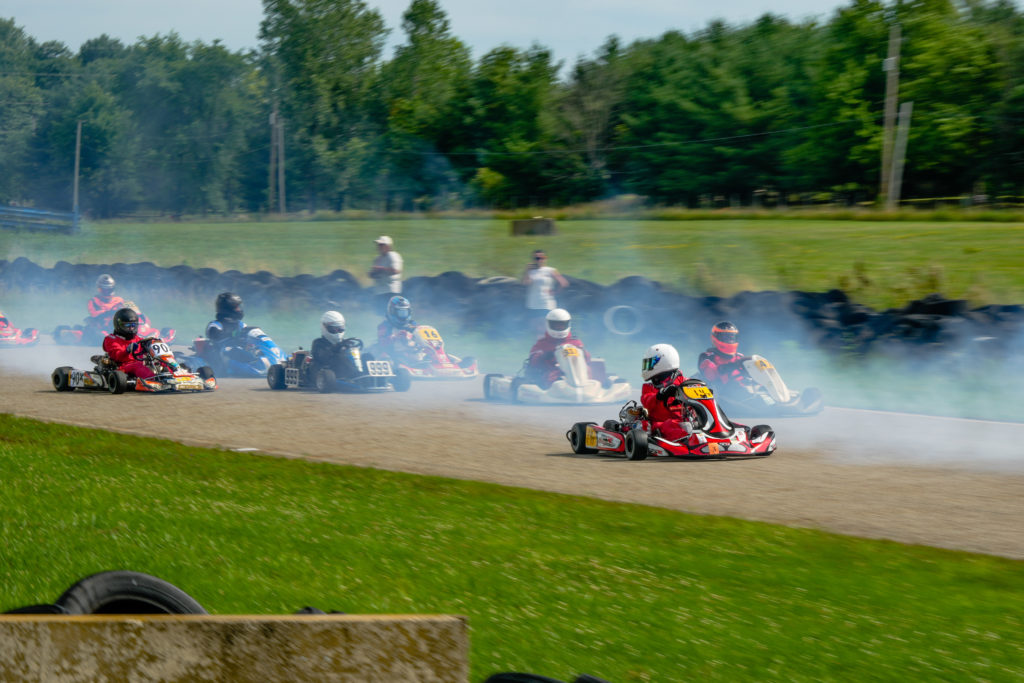

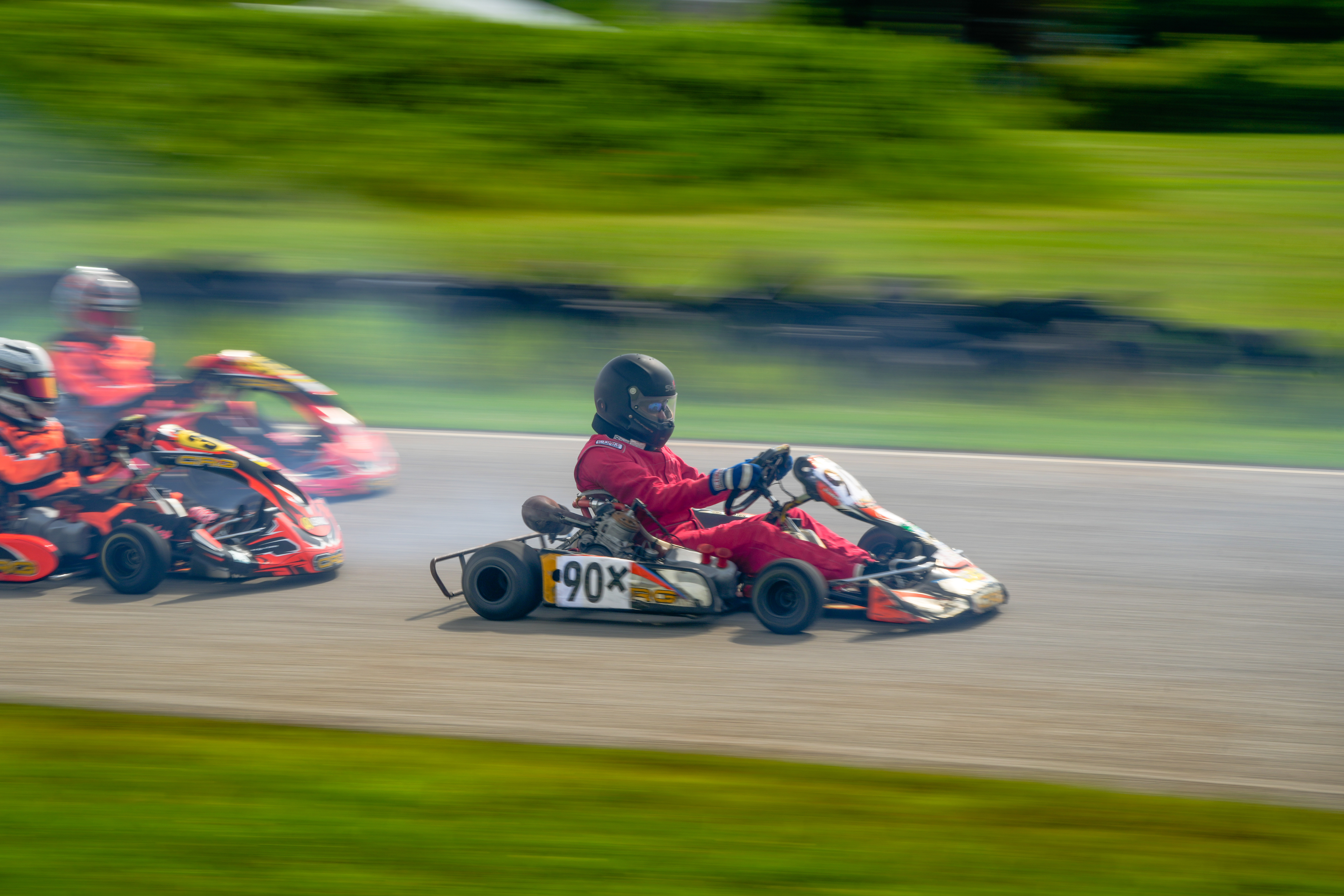
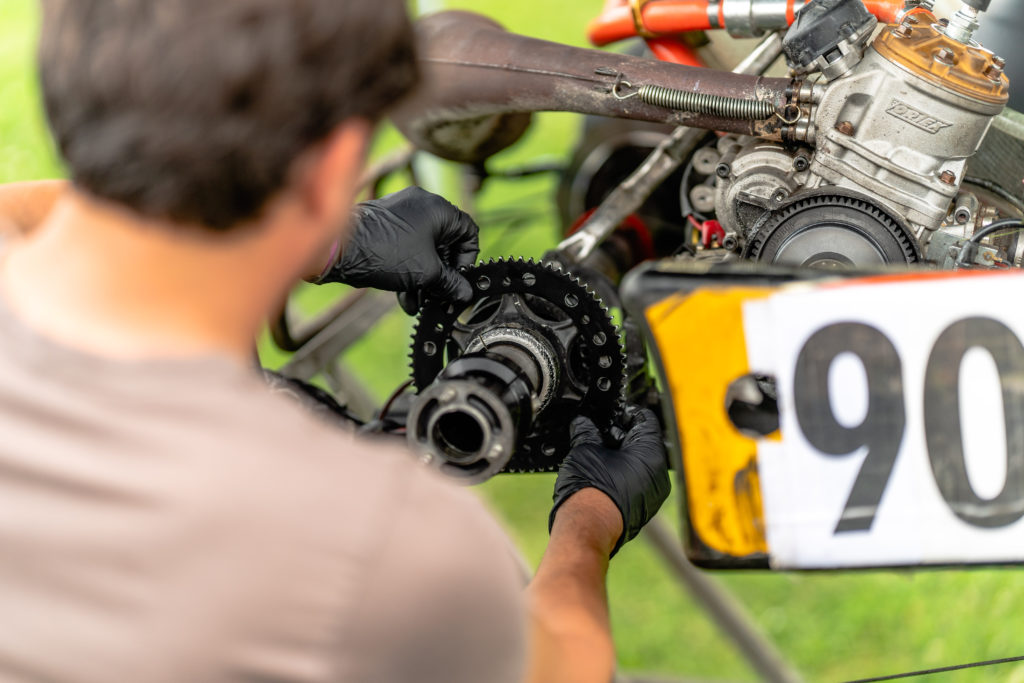
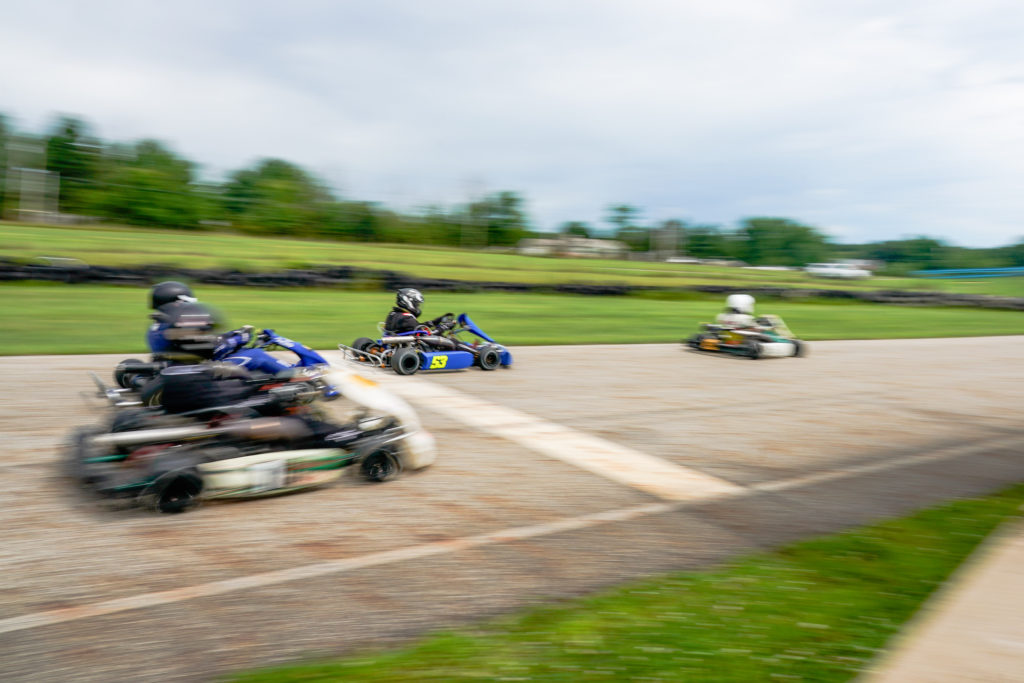
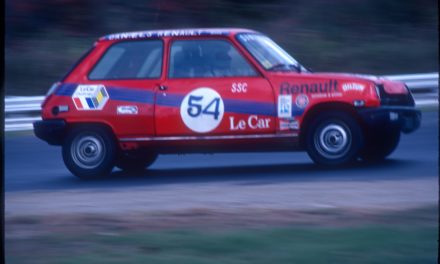

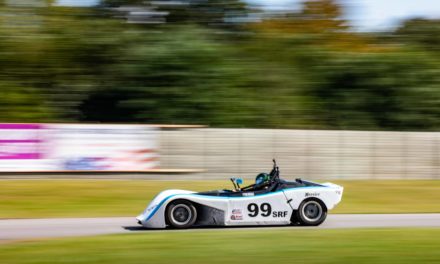
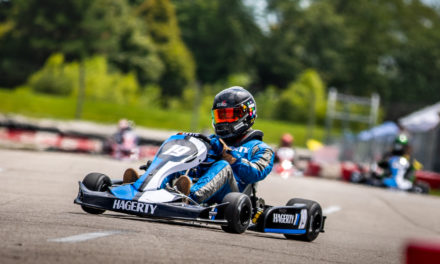





Love the in kart driver’s perspective. It’s not often those thoughts are shared. Free coaching right there…thank you, Eddy!
Further appreciate the raw psychology in the driver’s head. So many are cocky, your humility is refreshing.
Looking forward to the next one and cheering you on for podium.
This is excellent. I also suggest the electric
Shopping carts at Costco. The best value in
Bumper cars ever.
Obviously you have never been in a race kart. They are blindingly quick and will definitely get your heart rate up.
How could you not be hooked?
Kart is (almost) your middle name.
Great article.
Thanks
Great write-up. Thanks for sharing.
Great write up of a great slice of motorsports! And RBank is a great teacher!
for more info on the org that puts on the kart events at MO and Nelsons Ledges:
https://akraracing.com/road-race-series/
Enjoyed reading your article and description of your experience. Our daughter Clare has been kart racing for nine years now, starting when she was ten years old. She started with sprint tracks and now road races. We raced with you at this event. Nelson Ledges is one of our favorite tracks, along with Grattan and Pittsburgh. As her mechanic/manager, I wish I could get feedback like yours. Best I get is “kart feels pretty good dad”. Karting is a great family experience and the karting community is awesome. Our daughter learns from the great life experiences at the track which helps her develop respect, responsibly, self esteem and trackside banter skills. Our family is certainly hooked on the sport too and I hope to race vicariously through our daughter for as long as possible. Looking forward seeing you at the next race!
Dean and Ann Marie Tracy
Thanks, Dean! Clare is incredibly fast, so she and you are definitely doing something right! I spoke with her a couple months ago and will be doing another story on the community experience while karting. Stay tuned and see you next year!
-Eddy
Great insite. At 68 I went to a high speed concession kart track. I posted 2.5 seconds better than the field by the second heat. Most couldn’t figure out how this old F%#* was beating them. Obviously This was not my first rodeo as I raced karts 40 years prior. Trust the kart and drive like you stole it
Great article! I even learned something even though I have been around karting for most of my life. Thank you for sharing a great story of what is going through your mind when you are out there. I am glad you enjoy kart racing!
Sharon
https://90racing.com
Great article Eddy! I completely agree that karting is an excellent way to sharpen driving skills. Your journey as a novice karter is quite inspiring, and it is great to hear that you overcame the initial intimidation and went on to enjoy the experience.
I like how you shared your conversation during the race, and it was fun to read. I also appreciate the advice given by your friend, Robin Bank, and how he emphasized quick reactions and precise adjustments, which are critical for karting.
Your article shows that karting is not just for the young, but for anyone who loves driving and wants to improve their skills. Thank you for sharing your experience; I am sure it will inspire others to try karting as well!